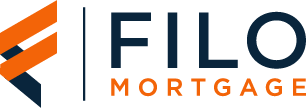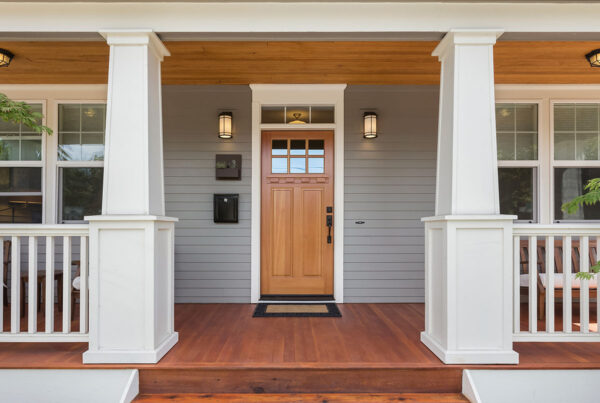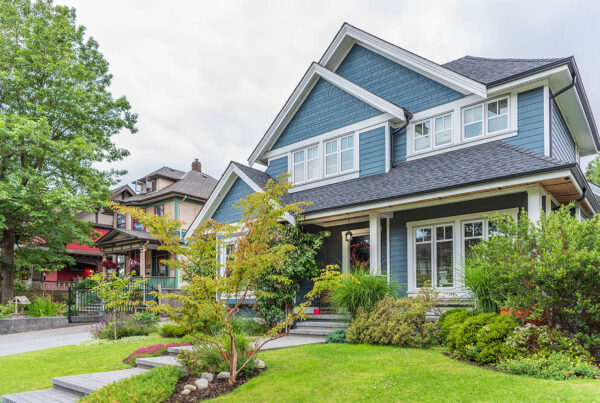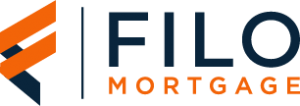Obtaining a mortgage is what makes homeownership a possibility for most people, but between down payments and closing costs, buying a home can still be out of reach for some. It may force them to lower their overall housing budget, which can mean compromising on certain things that ultimately lead to regret. Instead of purchasing a home you’re not happy with or holding off on your dreams of homeownership, explore the numerous options for getting a mortgage with little to no down payment. Possible solutions include:
USDA loans
These unique mortgages, which are backed by The United States Department of Agriculture, are exclusively available for homes in certain suburban and rural areas. USDA loans have lower fees compared to other types of mortgages, and they are also available for no money down.
To determine if the home you want to purchase is an USDA-approved area, you’ll want to look at the USDA’s map of qualifying areas. Any area outside an orange zone is an eligible USDA area.
Aside from location, other criteria must also be met to qualify for a USDA loan. Debt-to-income ratios cannot exceed 45 percent, and a borrower’s credit score must be at least 640. There are also income restrictions; the household’s combined gross income cannot exceed 115 percent of the county’s average income that you’re looking to purchase your home in.
The home you purchase with an USDA loan must also be your primary residence. It must be a single-family unit and can’t be a working farm.
FHA loans
The government also backs FHA loans, and they are insured by the Federal Housing Administration. FHA loans only require a 3.5 percent down payment, making it an appealing mortgage option for borrowers. There are some disadvantages to FHA loans, including PMI requirements due to the low down payment option, which also requires an upfront premium. In some situations, you may be able to roll the added cost of the upfront premium into your loan. This upfront premium, also known as MIP (mortgage insurance premium) also requires an annual premium payment on top of the initial payment due at closing.
Unlike private mortgage insurance (PMI), MIP is not automatically removed once 20 percent of the home’s value is paid. If you make a down payment that’s 10 percent or higher, the MIP is removed after 11 years. If the down payment was less than 10 percent, it will be required throughout the life of the FHA loan. One option for ending MIP sooner is refinancing into a conventional loan, which will allow you to eliminate this extra cost once you’ve reached 20 percent equity. Despite these extra fees, for many borrowers, the pros outweigh the cons.
VA loans
Not all borrowers will be eligible for a VA loan, but eligible homebuyers have the option of purchasing a home with no down payment. These loans, which are backed by the U.S. Department of Veterans Affairs, are available exclusively to active members of the military, veterans, and in some cases, surviving spouses.
In lieu of down payments and private mortgage insurance, borrowers instead pay a funding fee, which is a one-time fee that varies based on numerous factors. Although you aren’t required to make a down payment with a VA loan, putting money down will help to lower your funding fee, which ranges from 2.3 to 3.6 percent of the loan’s value.
You may be eligible for a VA loan if your credit score is at least 580 and you meet any of the following criteria:
- Served for at least six years in the National Guard or Reserves or at least 90 days under Title 32 orders, with at least 30 of those days being consecutive
- Discharged due to a service-related disability
- Served 90 consecutive days of active service during wartime
- Served 181 consecutive days of active service during peacetime
- The spouse of an active-duty service member who died from a service-related disability or in the line of duty
Conventional 97 mortgages
Backed by Fannie Mae and Freddie Mac as a conventional mortgage, this home loan gives borrowers the opportunity to purchase a home with as little as three percent down. This loan, which was updated recently, is available to those who haven’t owned a home in the last three years, as well as first-time homebuyers.
Because of the low down payment option, borrowers will initially have PMI as part of their monthly payments, which will eventually be removed when the home has enough equity. Borrowers may also have interest rates that are higher than government-backed loans as well.
Piggyback loans
Piggyback loans, also referred to as 80/10/10 programs, give borrowers an opportunity to finance a home purchase with 10 percent down. Although this down payment requirement is higher than other potential options, and most conventional mortgages typically only require 10 percent down anyhow, piggyback loans tend to offer more flexibility and lower payments. For some buyers, depending on the home they want to purchase, the specific structure of a piggyback loan is what can make it possible for them to move forward with their home purchase.
Instead of borrowing the remaining 90 percent with a single mortgage, the loan is split into two smaller loans. In an 80/10/10 structure, 80 percent of the remaining amount is one conventional fixed-rate loan, and the other 10 percent is either a home equity line of credit (HELOC) or home equity loan (HELOAN). The difference is that HELOCs are adjustable-rate loans and HELOANs are fixed-rate loans. Although this is the general structure that is usually offered, it may vary based on the borrower’s specific needs and preferences. For example, they may be advised to take on a piggyback loan that is structured as 75/15/10.
Physician loans
Doctors, and some dentists, may qualify for special physician loans that allow for little to no down payment. These loans also don’t impose PMI, despite the low (or lack of) down payment, saving borrowers a significant amount of money overall. Physician loans can be used for purchasing or refinancing a home, so long as it is used as a primary residence, although there may be exceptions to purchasing and/or refinancing multi-unit investment properties if one of the units is the borrower’s primary residence.
These loans are meant to help offset the substantial burden of medical school debt that many physicians have early on in their careers, considering these loans can save hundreds a month.
This also means more lenient debt-to-income ratios when it comes to eligibility. Additionally, eligible borrowers can also usually satisfy the employment requirement for the loan with an employment contract and prior to beginning residency.
Physicians with D.O. and M.O. degrees, and in some cases, D.P.M degrees, will typically qualify for these types of mortgages. These loans also normally offer maximum loan amounts for attending doctors compared to what’s available for interns, fellows, and residents.
HomeReady loans
HomeReady loans give qualifying borrowers the opportunity to purchase a home with as little as three percent down. It was primarily created for borrowers with lower-than-average income for their area.
The HomeReady program, which was launched in late 2015, is also available to current homeowners looking to refinance their mortgages. HomeReady allows up to 97 percent loan-to-value (LTV) in some scenarios, whereas other refinancing might require much lower LTV, such as 80 to 85 percent.
On top of income limitations, there are also other required criteria in order to qualify for this type of loan. For one, the home you purchase must be your primary residence. Although the type of property you buy—whether condo, single family home, manufactured home, and so on—will likely qualify, borrowers are required to live in the home they’re financing with a HomeReady loan. If they’re buying a multifamily home with more than one unit, they must live in one of the units full-time. The type of property you’re purchasing may also influence the minimum credit score required for a HomeReady loan; in most cases, a FICO score of at least 620 is required. However, if you’re purchasing a multi-unit home, a 680 minimum may be required.
Borrowers considering a HomeReady loan must also have a debt-to-income ratio (DTI) that’s 50 percent or less, which offers more flexibility compared to other types of mortgages. Additionally, borrowers must take an online homeownership education course, which varies between four and six hours.
Freddie Mac Home Possible Loans
If your credit score is 620 or higher and you’re looking for a fixed-rate mortgage with low down payment requirements, a Home Possible loan may be the right choice for you. In addition to down payment requirements being as low as three percent, mortgage insurance is also typically lower compared to FHA loans.
Unlike similar programs that offer a low down payment option, the Home Possible loan is available to both first-time and repeat home buyers who do not exceed income restrictions. The income limits for a Home Possible loan are less than 80 percent of the median income in your area.
Because a Home Possible loan is technically a conventional loan, it has similar requirements for minimum credit score, and usually requires that borrowers have at least a 620 credit rating. There is no specific requirement for debt-to-income ratios for these types of loans, but again, due to being a conventional loan, it is best to have a DTI that is at or below 43 percent.
Good Neighbor Next Door
Qualifying law enforcement officers, emergency medical technicians, teachers, and firefighters may be able to finance the purchase of their home through the Department of Housing and Urban Development’s Good Neighbor Next Door program. The down payment can be as low as $100, but only HUD-owned single family homes for 50 percent off their appraised value can be financed through this unique loan. Additionally, borrowers must live in the home for at least three years.
Down payment assistance programs
In addition to different types of mortgages that give borrowers the chance to put little to no money down for a home purchase, there are also down payment assistance programs that vary by state, which offer assistance to homebuyers. The average borrower receives approximately $11,565 with down payment assistance, and currently, about 87 percent of the single-family homes in the United States are potentially eligible for this type of assistance.
Contact Filo Mortgage today
If you’re looking for a down payment with little to no down payment requirements, we can help. Depending on your criteria and homeownership goals, we are happy to help you narrow down the options and find the perfect loan solution for your home purchase. Contact Filo Mortgage today!








